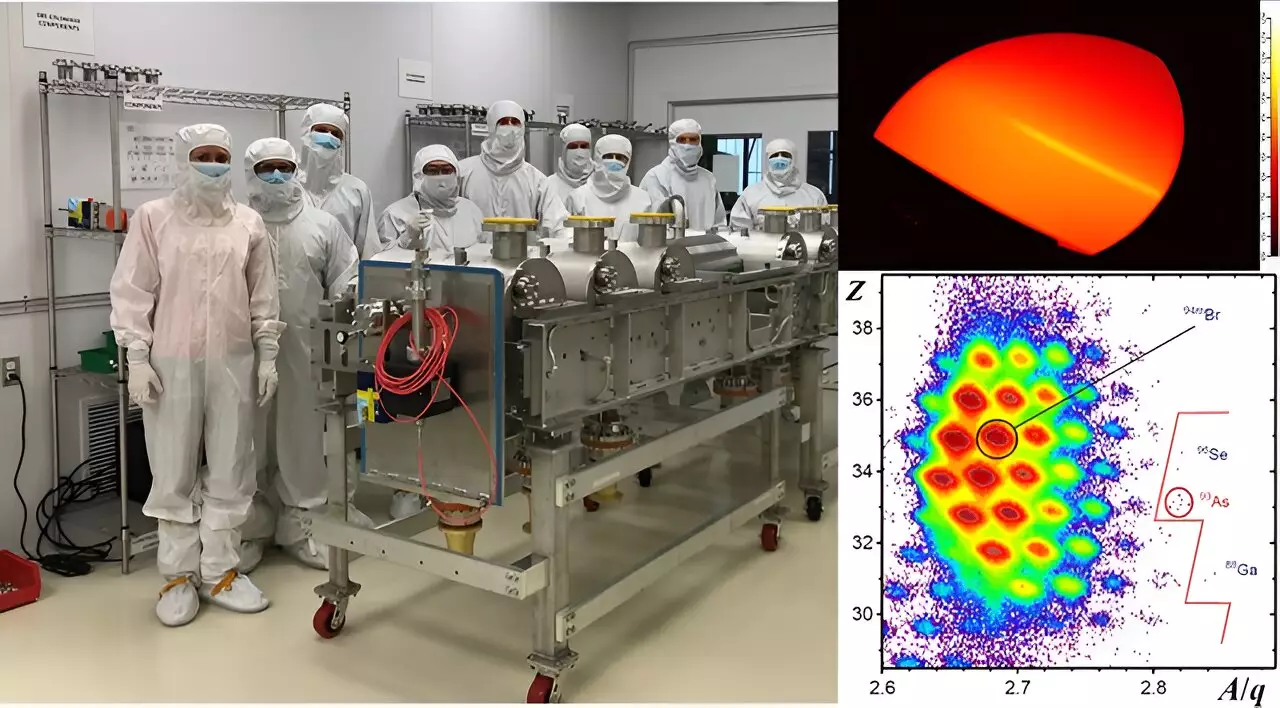Recent advancements at the Facility for Rare Isotope Beams (FRIB) have marked a significant leap in the realm of nuclear science. Scientists and engineers have successfully accelerated a beam of uranium ions to an unprecedented level, achieving a continuous beam power of 10.4 kilowatts. This development, documented in the journal *Physical Review Accelerators and Beams*, demonstrates not only the technical prowess of the FRIB team but also underscores the importance of uranium in isotope research. The complexities associated with accelerating uranium make this achievement even more remarkable, as it paves the way for extensive scientific inquiries reliant on rare isotopes.
Uranium’s place at the forefront of isotope research is attributable to its ability to produce a diverse array of isotopes through fragmentation or fission processes. The National Academy of Sciences and the Nuclear Science Advisory Committee have identified over 17 high-priority scientific programs that depend on rare isotope beams, with a significant number requiring a uranium primary beam. Thus, the successful acceleration of uranium not only aligns with existing scientific agendas but considerably boosts the potential for new discoveries.
New Frontiers in Rare Isotope Generation
The recent achievement by the FRIB team is a pivotal milestone, expanding the boundaries of what researchers can pursue within the nuclear landscape. Within merely eight operational hours of utilizing the high-power uranium beam, scientists successfully produced and identified three previously unobserved isotopes: gallium-88, arsenic-93, and selenium-96. The significance of these discoveries cannot be overstated, as they open new pathways for research that may lead to innovations in medicine, energy, and materials science.
Technological Innovations Enabling Progress
The acceleration of uranium necessitated the flawless function of cutting-edge accelerator components designed to work at optimal gradients. Notably, the accelerator at FRIB includes a groundbreaking superconducting linear accelerator, which is enhanced by 324 resonators housed in 46 cryomodules. The incorporation of a newly designed liquid-lithium stripper and advanced technologies—such as using an Electron Cyclotron Resonance (ECR) ion source—contributed to the successful generation of the high-power uranium beam. Researchers implemented sophisticated methods to enable the simultaneous acceleration of various charge states of uranium, a feat that directly contributed to achieving record beam power.
The collaborative framework involved in accomplishing these milestones saw the integration of expertise from scientists across nations, including the United States, Japan, and South Korea. Such cooperation is essential, as the pursuit of knowledge in nuclear science often demands diverse insights and collective problem-solving capabilities. Moving forward, the FRIB’s advancements herald a new era in isotope research, potentially revealing a wealth of information that may lead to technological and scientific breakthroughs once deemed impossible.
The unprecedented achievements at the Facility for Rare Isotope Beams showcase not only the potential of modern science but also emphasize the collaborative spirit essential in overcoming challenges. As researchers probe deeper into the complexities of nuclear isotopes, the implications for various fields could be transformative—illuminating the paths for future innovations.


Leave a Reply